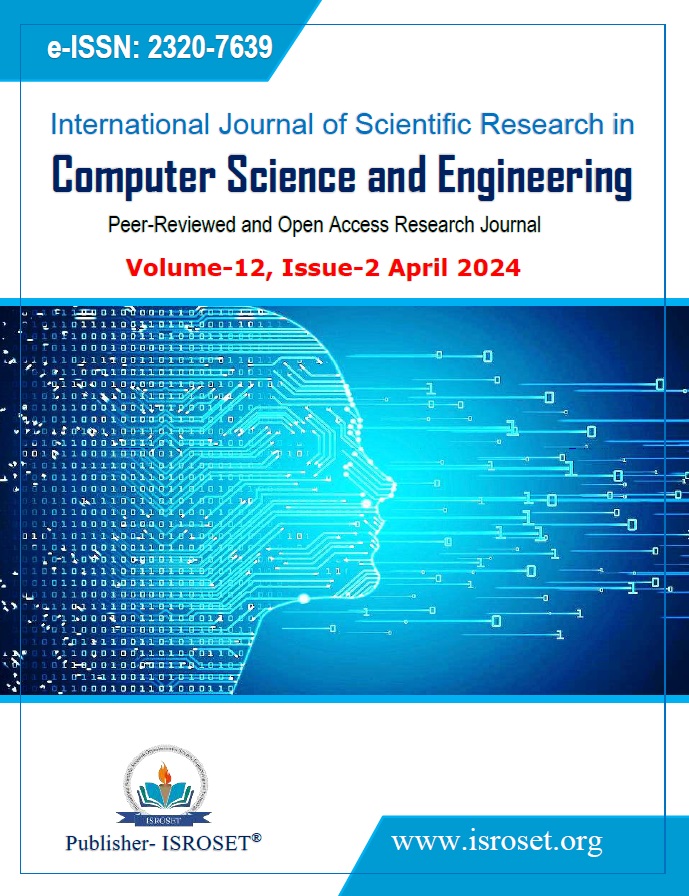Simulated Comparison of Power-Aware Routing Protocols in Mobile Ad Hoc Networks
Keywords:
MANETs, Performance analysis, Power-aware routing protocols, Routing Metrics, SimulationAbstract
An infrastructure-less wireless network, or mobile ad hoc network (MANET), is one in which the topology is dynamically established in the absence of a central authority like a router, access point, etc. Due to the short battery life of its mobile nodes, which are powered by batteries, a node`s active state is shortened by unplanned shutdowns or restarts. A difficult task in MANETs is extending the battery life of each node. This is achieved by creating and implementing a power-aware routing protocol that considers power optimization techniques—a method that is rarely used with native routing protocols. The reactive routing protocol MMBCR and the proactive routing protocol MBCR are two native routing protocols that are available in MANETs. In this work, their respective performances are evaluated. To demonstrate how using a power-aware routing protocol might improve MANET operating performance, an evaluation is carried out by contrasting these two protocols with a well-known power-aware routing protocol that is available for MANET MTPR. For assessing performance, four widely-used routing metrics are employed: the total number of missed packets, the end-to-end packet delivery ratio, the end-to-end delay, and the network lifetime. The simulation findings, conducted for all situations examined using the ns -2 simulator, verify that MTPR performs better than other protocols, MBCR performs mediocrely, and MMBCR almost performs worse than other protocols.
References
Dharma Vir et al., "Performance Analysis Of MTPR Routing Protocol in Power Deficient Node", nternational Journal on AdHoc Networking Systems (IJANS), Vol. 2, Issue. 4, 2012.
Xin Ming Zhang, Feng Fu Zou, En BoWang, and Dan Keun Sung, “Exploring the Dynamic Nature of Mobile Nodes for predicting route lifetime in mobile ad hoc networks”, IEEE transactions on vehicular technology, Vol. 59, Issue 3, 2010.
wang-Ryoul Kim, Sung-Gi Min and Nam-Kyu Yu, "Maximizing the lifetime of wireless ad hoc networks using Minimizing the Maximum used Power Routing", 2008 3rd International Symposium on Wireless Pervasive Computing, pp. 557-561, 2008.
A. Kumaravel Chandrasekaran, “A Complete Study On Power Aware Routing Protocol For Mobile Ad Hoc Network”, IOSR Journal of Electrical and Electronics Engineering (IOSR-JEEE), pp. 2320-3331, 2014.
Rakesh Kumar, Nuka Gayathri, Balamurugan Balusamy “Enhancing network lifetime through power-aware routing in MANET”, International Journal of Internet Technology and Secured Transactions, Vol. 1, Issue 9, 2019.
Niranjan Kumar Ray, Ashok Kumar Turuk, “Energy Efficient Techniques for Wireless Ad Hoc Network”, Proceeding of first international joint conference on information and communication technology IJcICT 2010, pp. 105-111, 2010.
Michail Anastassios, Anthony Ephremides, “Algorithms for routing session traffic in wireless ad-hoc networks with energy and bandwidth limitations”,12th IEEE International Symposium on Personal, Indoor and Mobile Radio Communications. PIMR C 2001. Proceedings, Vol. 2, 2001.
Lu, Ting and Jie Zhu, “Genetic Algorithm for Energy-Efficient QoS Multicast Routing”, IEEE Communications Letters, Vol. 17, pp. 31-34, 2013.
Tamer DAG, “Dynamic Priority Packet Scheduler with Deadline Considerations (DPD)”, International Institute of Informatics and Systemics, 2010.
Tawfik Al-Hadhrami, Faisal Saeed, Funminiyi Olajide, “Power-aware routing algorithms (PARA) in wireless mesh networks for emergency management", 2018.
Downloads
Published
How to Cite
Issue
Section
License

This work is licensed under a Creative Commons Attribution 4.0 International License.
Authors contributing to this journal agree to publish their articles under the Creative Commons Attribution 4.0 International License, allowing third parties to share their work (copy, distribute, transmit) and to adapt it, under the condition that the authors are given credit and that in the event of reuse or distribution, the terms of this license are made clear.







